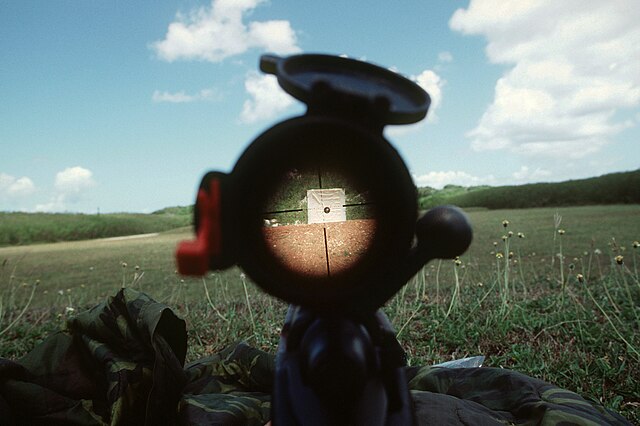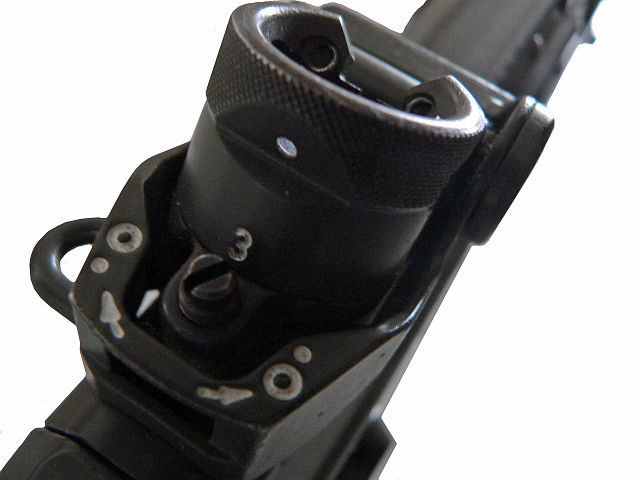A sight or sighting device is any device used to assist in precise visual alignment of weapons, surveying instruments, aircraft equipment, optical illumination equipment or larger optical instruments with the intended target. Sights can be a simple set or system of physical markers that serve as visual references for directly aligning the user's line of sight with the target, or optical instruments that provide an optically enhanced—often magnified—target image aligned in the same focus with an aiming point. There are also sights that actively project an illuminated point of aim onto the target itself so it can be observed by anyone with a direct view, such as laser sights and infrared illuminators on some night vision devices, as well as augmented or even virtual reality-enabled digital cameras with software algorithms that produce digitally enhanced target images.
A Royal Canadian Sea Cadet looks through a machine gun sight.
Picture through an aperture (or closed) iron sight on an H&K MP5 submachine gun
A view through a 20× power telescopic sight
A circumferentor featuring a pair of slotted sights effectively constituting an alidade
Iron sights are a system of physical alignment markers used as a sighting device to assist the accurate aiming of ranged weapons (such as a firearms, airguns, crossbows, and bows, or less commonly as a primitive finder sight for optical telescopes. Iron sights are the earliest type of sighting device, as it relies completely on the viewer's naked eye, and is distinctly different to optical sights such as telescopic sights, reflector sights, holographic sights, and laser sights, which make use of optical manipulation and/or active illumination.
Sight picture through iron sights of an H&K MP5 submachine gun. The annular shroud around the front post sight is aligned with the rear peep sight to ensure the firearm is properly trained.
Spiderweb-type (low level) anti-aircraft sight on an MG 34.
Rear, rotating diopter drum sight of a SIG SG 550 assault rifle. The viewing aperture above the "3" (denoting the 300 m setting) can be seen
Pictures taken under identical conditions through large (left) and small (right) diameter aperture sights, with camera focused on front sight







